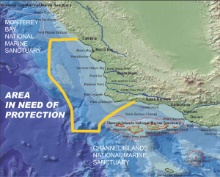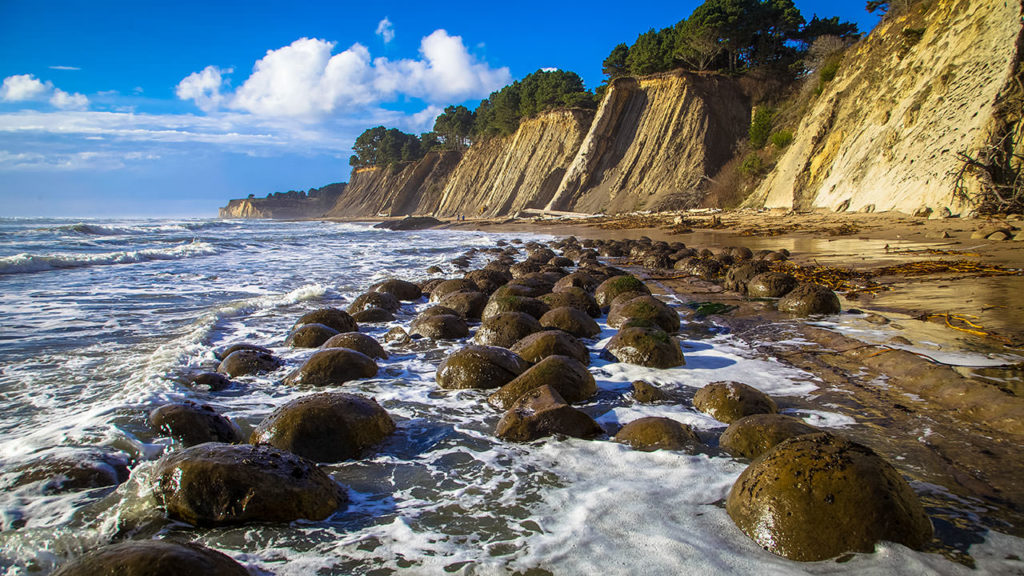The perils of approving a marine sanctuary
February 9, 2017
OPINION by STEVEN L. REBUCK
The word sanctuary has a nice sound. A holy place or natural retreat for animals. Add marine. Marine sanctuary. A safe place for Dory. Add Native Americans. It’s a trifecta: Chumash Heritage National Marine Sanctuary. Sounds so beautiful. Or is it?
Our San Luis Obispo County Board of Supervisors has had two hearings on this subject in recent weeks. Other cities and agencies have also been hearing this proposal. But, the Board of Supervisors voted 3-2 against the establishment of a sanctuary off our coast. How can this be?
Proponents for the sanctuary delivered 12,000 signatures on petitions to demonstrate local support. On the other side, the opponents appeared to have fewer than 400 supporters.
On one hand, thousands of local citizen have faced off against the small business community as represented by commercial fishermen, ranchers, farmers and the Chamber of Commerce. An analogy may be that this is a case of popular vote versus the Electoral College as we saw in the recent presidential election.
Another wrinkle is the name of the sanctuary. Although “Chumash” is used in the title, the only state and federally recognized Chumash Tribe, the Santa Ynez Band of Chumash Indians has not endorsed the sanctuary bearing their name. Another state recognized tribe, The Salinan Tribe, has not endorsed the sanctuary either. What’s going on?
The “tribe” cited in the title of this sanctuary is not a state or federally recognized entity. The Northern Chumash Tribal Council is the source of the “Chumash” in the Chumash Heritage NMS.
The Santa Ynez Band of Chumash Indians did comment on the proposed sanctuary in a May 4, 2016 letter to our former Congresswoman, Lois Capps.
“The Santa Ynez Band of Chumash Indians recoil in disbelief about you public display of support of the Chumash Heritage National Marine Sanctuary,” the letter said.
Their letter continues that the SYBCI would prefer Mrs. Capps focus instead on: “…support the flesh and blood members of the Santa Ynex Band of Chumash Indians…”
Similarly, in a Feb. 27, 2015 letter from the Salinan Tribe to the SLO County Board of Supervisors we find: “The Salinan Tribe of San Luis Obispo and Monterey counties wishes to object to the boundary lines proposed by Fred Collins for his Chumash Heritage National Marine Sanctuary.”
These documented conflicts between “tribes” was a significant factor in our Board of Supervisor’s decision to oppose the sanctuary.
Another issue in this debate is the belief by some that a NMS designation could be used to stop offshore oil development. But, is this accurate? 
In the Channel Islands NMS offshore Santa Barbara, there are offshore oil production platforms. Some of these platforms existed before the sanctuary was designated.
There are undeveloped offshore oil leases in the ocean waters off southern San Luis Obispo County.
An important aspect of offshore development is “staging.” That is, it takes tremendous amounts of land and harbors for people, equipment, ships, aircraft and material to site a rig. The closest port where this could possibly occur is Oxnard, more than 100 miles away. The distance is far too great to be practical.
Knowing this, SLO County placed Measure A on the ballot in 1986. Passed by our county voters, Measure A requires any onshore support facility must be approved by a two thirds vote of our county citizens.
Although sanctuary supporters like supervisor’s Adam Hill and Bruce Gibson are correct that SLO County has no jurisdiction over the nearshore waters, the county does have land use jurisdiction. To date, Measure A has succeeded for 31 years.
Other significant issues have been raised by the commercial fishermen of Morro Bay, Port San Luis, Santa Barbara and Monterey. Speaker after speaker came forward to repeat the mantra that “a marine sanctuary would have no impact on commercial or recreational fishing.” Then why would so many fishermen come forward with numerous examples and documentation that indeed, national marine sanctuaries do have influence on fishing regulations?
What sanctuary managers have been shown to do is use their influence and pressure on other state and federal agency in “recommending” management changes.
And, it may not just be fishermen. When the Monterey Bay sanctuary was first designated, people walking on the beach, picking up rocks, were given tickets for “mineral extraction.”
In a unique video presentation before the Board of Supervisors on Feb. 7, professional surfer, Scott Jerrett testified he had received a ticket from MBNMS law enforcement for using a Jet Ski in the sanctuary as a rescue devise. (The following day, the Jet Ski was not onsite and another surfer died due to lack of rescue equipment.)
Jerrett had received a ticket for $500. Later he was threatened by a National Oceanographic and Atmospheric Administration attorney that if he fought the ticket, it would go up to $2,500., and could ultimately reach $140,000. Jarrett’s comment was, “…this is un-American!”
Our Board of Supervisors made it clear that their vote was not the end of this discussion. The Chumash sanctuary is only in the NOAA “inventory” of sites under consideration.
Citizens of our county need to decide whether they think our local and state management of natural resources is adequate or whether we need the federal government to guide our lives.
Steve Rebuck of San Luis Obispo is a fisheries consultant who has appeared before the U.S. Congress four times (1984, 1985, 2001, 2003) on the sea otter in California, MMPA and Endangered Species Act.







The comments below represent the opinion of the writer and do not represent the views or policies of CalCoastNews.com. Please address the Policies, events and arguments, not the person. Constructive debate is good; mockery, taunting, and name calling is not. Comment Guidelines